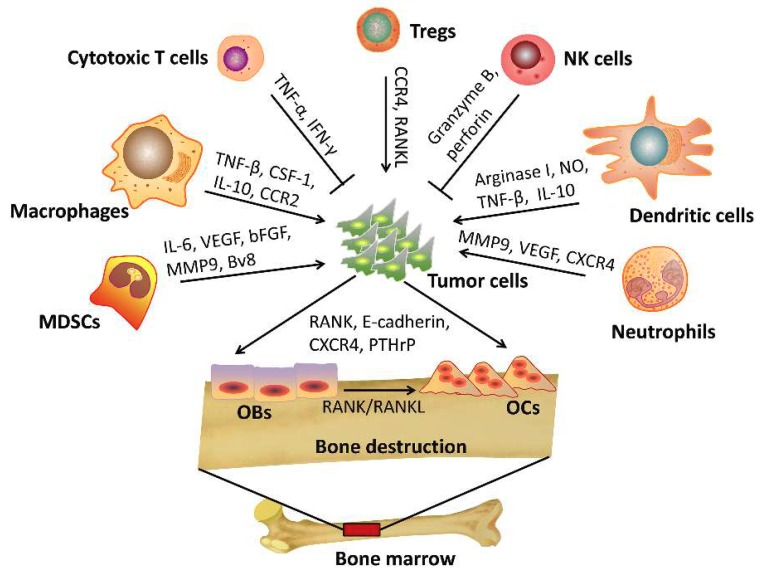Figure 1.
The interaction of immune cells and cancer cells during bone metastasis. Cytotoxic CD8+ T cells release TNF-α and IFN-γ to eliminate tumor cells. Natural killer cells (NK cells) kill tumor cells through granzyme B- and perforin-mediated apoptosis. Regulatory T cells (Tregs) promote tumor cell to bone metastasis through CXCR4/CXCL12 signaling or RANK/RANKL axis. Tumor-associated macrophages (TAMs) promote tumor cell to bone metastasis through CCL2/CCR2 or CSF-1/ CSF-1R signaling. Meanwhile, TAMs secret high levels of IL-10 and TGF-β to decrease the activation of CD4+ and CD8+ T cells. Dendritic cells (DCs) suppress the cytotoxic capacity of CD8+ T cells via production of arginase I, nitric oxide (NO), TGF-β, interleukin-10 (IL-10) to promote tumor progression. Myeloid-derived suppressor cells (MDSCs) release chemokines including IL-6, vascular endothelial growth factor (VEGF), basic fibroblast growth factor (bFGF), and matrix metalloproteinase (MMP)-9 to promote cancer progression and bone metastasis. Tumor-associated neutrophils (TANs) are able to release CXCR4, VEGF and MMP9 to promote tumor bone metastasis. Tumor cells also release factors such as RANK, E-cadherin, CXCR4, and parathyroid hormone-related protein (PTHrP) that promote osteolytic bone lesions.

